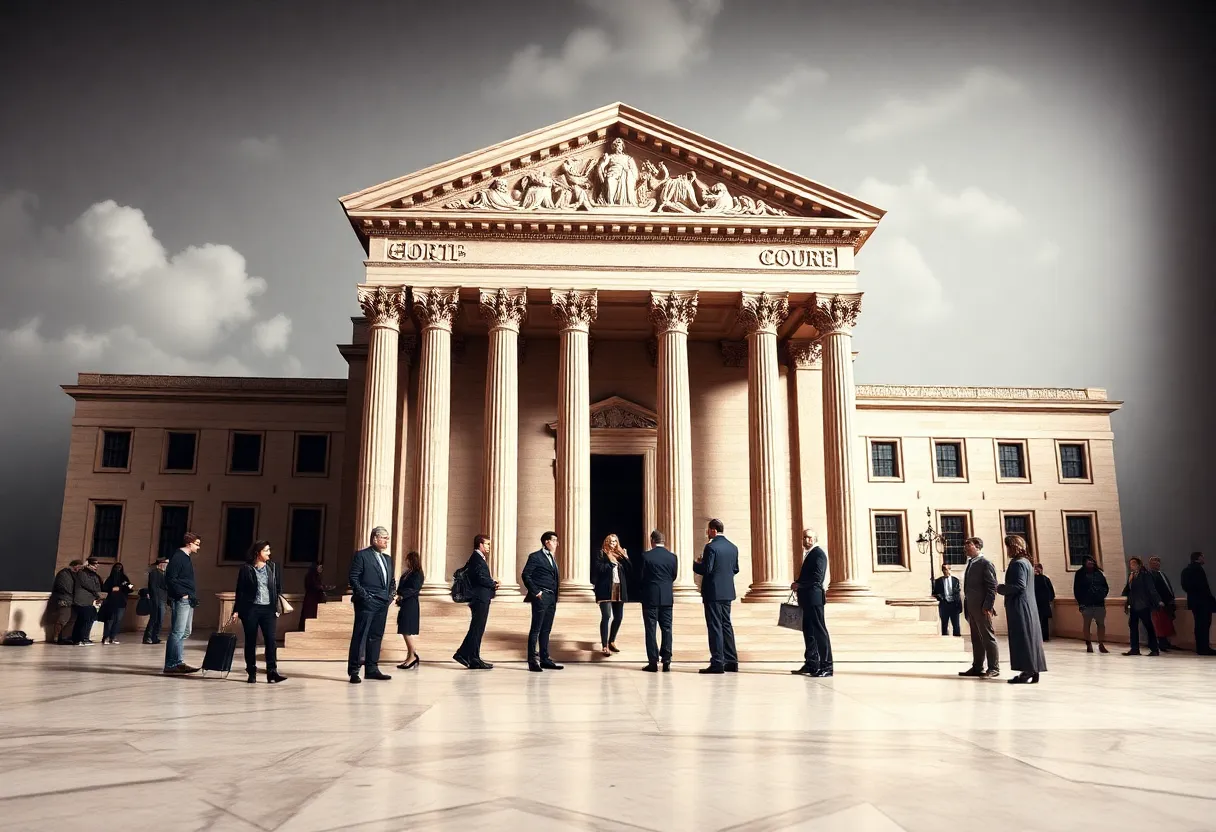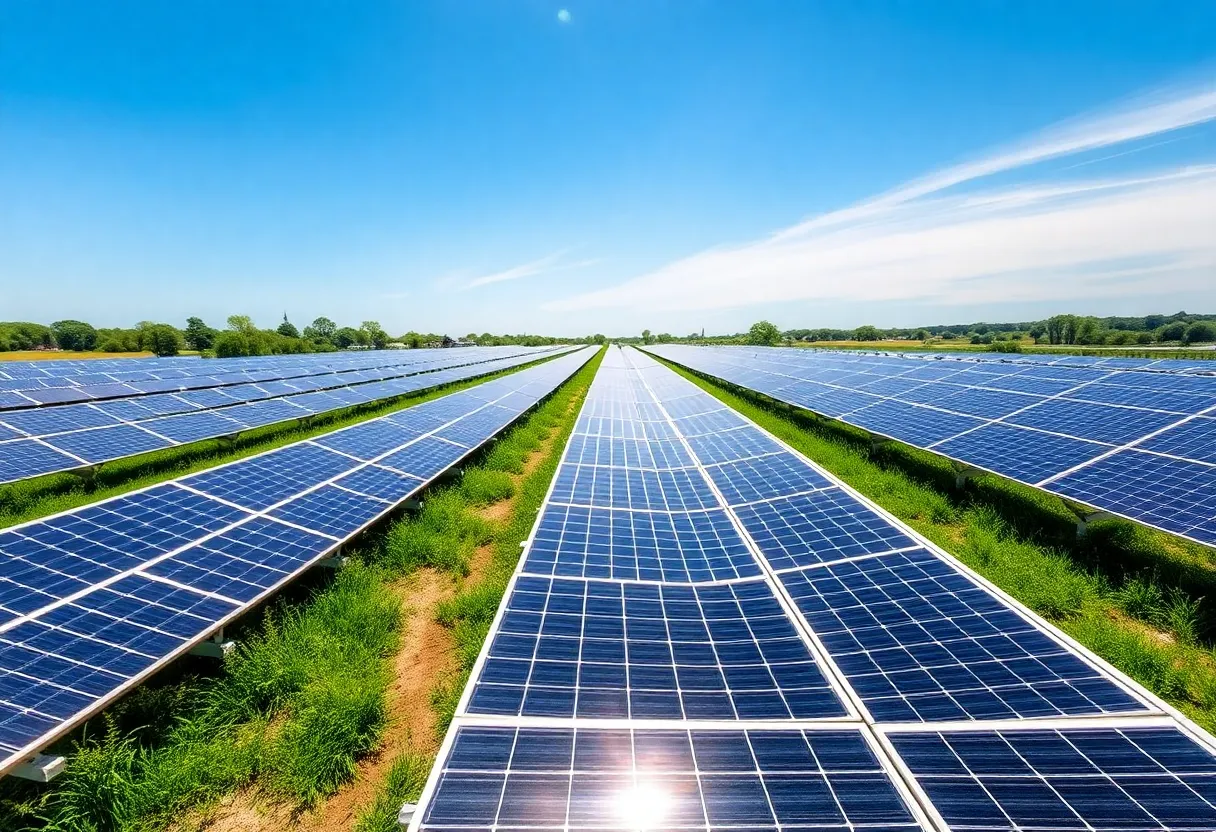News Summary
A recent survey shows nearly two-thirds of Americans fail the citizenship exam, highlighting a lack of understanding about the U.S. government. Gail Prudenti, a former chief judge, aims to educate citizens on the role of the New York Supreme Court and its responsibilities. The court, often confused with the highest court, serves as a trial court adjudicating various legal matters. In light of the survey’s findings, Prudenti emphasizes the need for citizens to grasp the judicial system for informed civic engagement.
New York City — A recent national survey has revealed that nearly two-thirds of Americans are unable to pass the citizenship exam required for immigrants. This alarming statistic points to a broader issue: a significant lack of understanding among citizens about how the U.S. government operates, particularly concerning the judicial system. In response to these findings, Gail Prudenti, a former chief administrative judge of the New York courts, aims to clarify the often-misunderstood role of the New York Supreme Court and the wider judicial landscape in the state.
The New York Supreme Court, frequently misidentified as the highest court in the state, actually serves as a comprehensive trial court with general jurisdiction. This court can adjudicate a wide range of legal matters, including civil, criminal, and family law cases. Notably, cases involving divorce in New York are exclusively overseen by justices of the Supreme Court. This misunderstanding about the nomenclature can create confusion for residents trying to grasp the judicial system.
In New York’s judicial framework, there are a total of 62 counties, each equipped with elected Supreme Court justices. These justices are chosen by voters within specific regional districts and are tasked with handling various types of cases. The New York state Constitution mandates a requirement of one Supreme Court justice per 100,000 citizens; however, this ratio is considered outdated given the increasing frequency of legal disputes today.
Due to the overwhelming caseloads faced by the courts, judges from other judicial branches are often appointed as acting Supreme Court justices to help manage the workload. Additionally, certain counties utilize judges who serve as County Court Judges to handle criminal court matters, further demonstrating the intricate workings of the New York judicial system.
Each elected Supreme Court justice serves a term of 14 years, with a mandatory retirement age set at 70 years. However, certified judges may extend their service for up to six additional years. The political involvement of these judges is strictly regulated; they cannot engage in political activities outside campaign periods, nor can they endorse political candidates.
Recent high-profile cases within the New York Supreme Court have garnered significant attention, and the array of cases highlights the court’s extensive jurisdiction. Some examples include a criminal case against former President Donald Trump, the murder charge relating to the assassination of UnitedHealthcare CEO Brian Thompson, and the high-profile rape and sexual assault trial of Harvey Weinstein. Additionally, the court adjudicated the acquittal of Daniel Penny in the “subway choking incident,” with an ongoing case related to that incident still pending.
The scope of cases that fall under the Supreme Court’s purview is broad. It includes election fraud cases, legal malpractice claims, challenges to state regulations, and civil rights issues. Cases heard in the Supreme Court can often be appealed, with some reaching the Court of Appeals, which is the highest court in New York.
As part of a series aimed at increasing public understanding of the New York judicial system, Gail Prudenti intends to delve further into the distinctive courts in the state, with the upcoming focus shifting to family court. This initiative could help demystify the intricacies of the judicial process for residents who may feel disconnected from or overwhelmed by legal terminology and judicial structures.
Gail Prudenti’s extensive experience in the judicial system positions her uniquely as an educator on these topics. Currently serving as a partner at Burner Prudenti Law, P.C., Prudenti emphasizes the importance of citizens being informed about their judicial system, as it is essential for engaged and educated citizenship.
Understanding the role of the New York Supreme Court and the state’s judicial system is critical, especially in light of the citizenship survey. Such knowledge can empower citizens, fostering a more informed electorate that is better prepared to engage with the legal and political systems.
Deeper Dive: News & Info About This Topic
HERE Resources
New York Supreme Court Rules Against TikTok in Lawsuit
New York Court Reinforces Internal Affairs Doctrine in Governance
Second Circuit Upholds New York’s Reproductive Health Act
New York Supreme Court Rules on Retroactive Tax Regulations
Trump’s Tariffs Under Legal Challenge As States Fight Back
Upper East Side Medical Building Faces Foreclosure Issues
Concerns Over DOJ’s Antitrust Case Against RealPage and AI Innovation
NewYork-Presbyterian Hospital to Lay Off 1,000 Employees
Lawsuit Filed Against New York’s Freshwater Wetland Regulations
Fox News and Smartmatic Engage in High-Stakes Defamation Lawsuit
Additional Resources
- Bloomberg: NYC Buildings in Midtown Soho for Sale
- Wikipedia: New York Supreme Court
- New York Times: Living Small on the Hudson River
- Google Search: New York Judicial System
- New York Post: Manhattan Building Sales Market
- Google Scholar: New York Supreme Court
- Curbed: Andy Cohen and Danny Strong Trade Addresses
- Encyclopedia Britannica: New York Bench
- Town & Country: Chrysler Building for Sale
- Google News: New York Real Estate News

Author: STAFF HERE NEW YORK WRITER
The NEW YORK STAFF WRITER represents the experienced team at HERENewYork.com, your go-to source for actionable local news and information in New York, the five boroughs, and beyond. Specializing in "news you can use," we cover essential topics like product reviews for personal and business needs, local business directories, politics, real estate trends, neighborhood insights, and state news affecting the area—with deep expertise drawn from years of dedicated reporting and strong community input, including local press releases and business updates. We deliver top reporting on high-value events such as New York Fashion Week, Macy's Thanksgiving Day Parade, and Tribeca Film Festival. Our coverage extends to key organizations like the Greater New York Chamber of Commerce and United Way of New York, plus leading businesses in finance and media that power the local economy such as JPMorgan Chase, Goldman Sachs, and Bloomberg. As part of the broader HERE network, including HEREBuffalo.com, we provide comprehensive, credible insights into New York's dynamic landscape.





